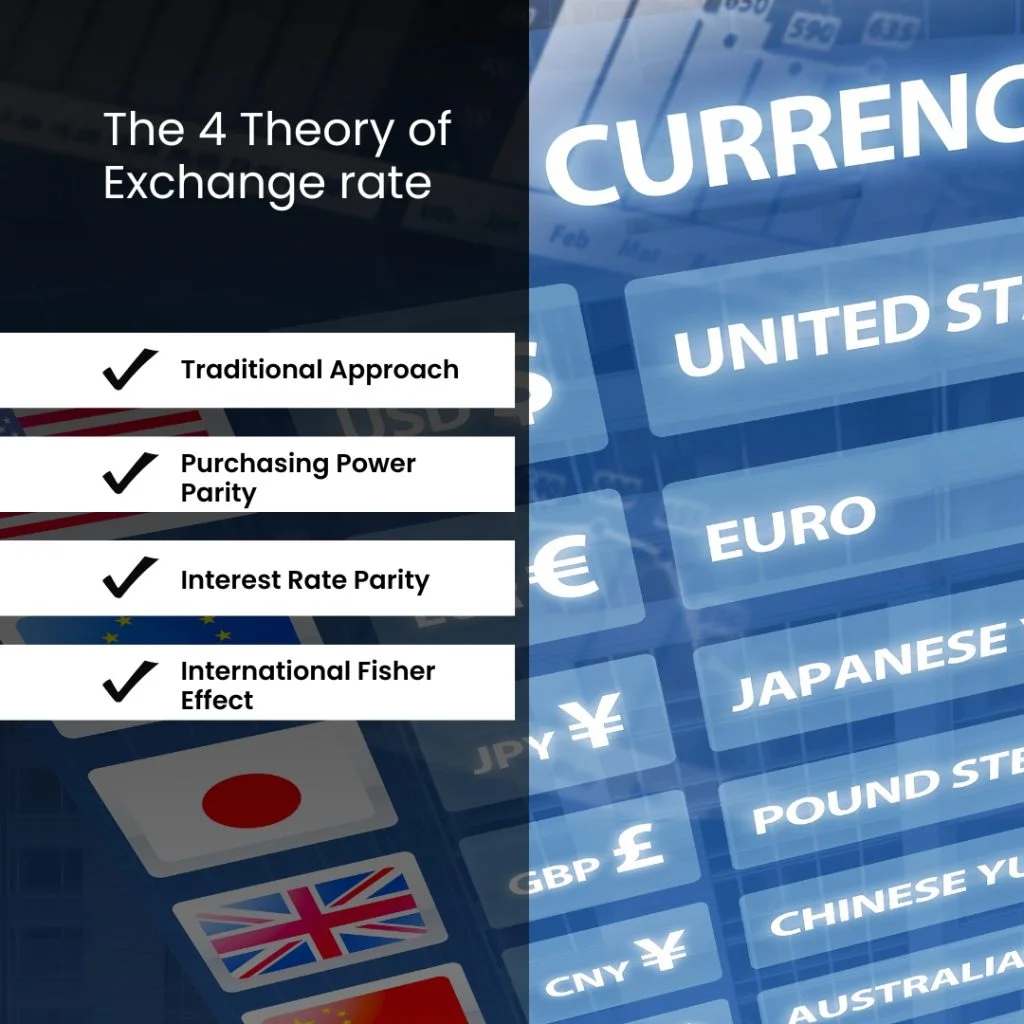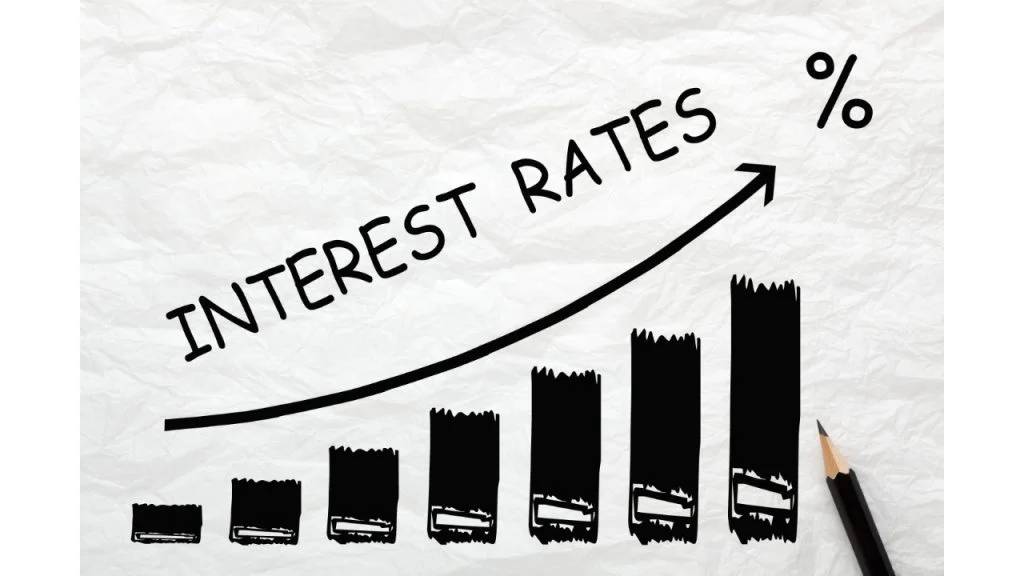Looking to understand what are the International Exchange Rate Theories? AAmcourses got you covered.
In 1971, the convertibility of the dollar into gold reflected recognition by monetary officials that reduced shares in total international liquidity made it impossible for the US to influence the course of the exchange rate. The norms for exchange rates had shown flaws in the operation of the adjustable pay system. These norms provided the private market with costless and risk-free opportunities for making a profit.
The period of floating rates gave rise to unstable exchange rates. The exchange market reacted well to the changes in the current account. In contrast, the product market responded strongly to the changes in the exchange market.
Even the capital movement becomes complex and complicates the determination of exchange rates. All these factors gave rise to the international exchange rate theories.
Before jumping onto the exchange rate theories, let’s look at what the exchange rate is.
What is Exchange Rate?

The exchange rate refers to a country’s currency’s value compared to other countries currencies. For example, the value of $1 is €0.90. which means it takes 1 dollar to buy 0.90 Euros.
Most of the exchange rates are referred to as floating rates due to their unstable and fluctuating nature. The exchange rate affects the countries and their business affairs with other countries. It increases the price of goods and services after factoring in import and export charges.
The 4 Exchange Rate Theories
Firstly, we will discuss the traditional theories based on trade flow and PPP. The trade flow and Purchasing Power Parity are factors that are used to determine the exchange rate for the long term.
After the Traditional theory, we will move on to the modern exchange rate theories. Modern theories are more focused on capital markets and international capital flows. Modern theory is more concerned with explaining the reason for the short-term volatility of the exchange rate along with its potential to overshoot in the long-term equilibrium level.
ALSO READ : What is International Finance? Basic Definition, Scope and 4 Advantages
Let’s study the exchange rate theories in detail.

Traditional Approach
The traditional approach considers the import and export of goods to determine the exchange rates. As this method considers the trade flow, it is also known as the trade approach.
According to the traditional approach, the equilibrium exchange rate is when the country’s imports and export are equal. If the country’s import increase and become more than its export, the exchange rate will fall, i.e., the country’s currency will depreciate in value. Increased imports results in cheaper exports and expensive imports.
As the speed of adjustment depends on how responsive import and export are to price changes, this approach is also known as the elasticity approach. The elasticity approach provides one fundamental factor for determining the exchange rate for the long term.
Purchasing Power Parity
One of the most known and controversial forms of all the exchange rate theories is the Purchasing Power Parity. This theory focuses on the interest rate and exchange rate relationship. There are 2 forms of the PPP theory – absolute form and relative form.
Absolute Form
The absolute form suggests that the price of the same commodities must be the same in every country when measured in a common currency. If there is a price difference, then the demand should shift so that the prices can converge.
Let’s take US and UK for example. Suppose the price of a product is lower in the UK than in the US when measured in common currency. The demand for the product should increase in the US and decline in the UK simultaneously. Due to the demand, the prices will be affected in both countries.
When we look at it more practically, the transportation cost, tariffs, and quotas will prevent the absolute form of PPP.
Relative Form
Relative form accounts for the possibility of an imperfect market. This form understands that due to various factors, the prices of the same products cannot be similar when measured in a common currency.
The relative form states that the rate of change in prices should be similar when measured in a common currency. The theory is based on the assumption that trade barriers and transportation costs are stable.
Interest Rate Parity

The next of the four exchange rate theories is the IRP. The IRP is a theory based on the relation between the current exchange rate difference and the future exchange rate difference.
When the market forces cause the interest rate and exchange rate to be in such a form that covered interest arbitrage is no longer feasible, the stage is called Interest Rate Parity. In simple words, this theory states that the forward exchange rate should be equal to the interest rate differential between two countries.
IRP has two forms :
Covered Interest Rate Parity
The CIRP states that the future exchange rate will be determined based on the current differential interest rate of the concerned countries.
Uncovered Interest Rate Parity
The UIRP states that future exchange rates in a foreign currency will be based on the difference between the current interest rate of the countries.
International Fisher Effect
Along with the PPP, IFE is another of the major exchange rate theories. It uses interest rate rather than the difference in inflation rate to determine the cause of the exchange rate over time.
According to the Fisher effect, the nominal risk-free interest rate contains the real rate of return and expected inflation. If the country’s investors require the same return, the interest rate difference may be the result of the difference between the inflation rate.
The IFE theory suggests that foreign currency with a high-interest rate will depreciate because the high interest indicates inflation. The nominal interest risk would also include the default risk of an investment.
ALSO READ : 8 Importance of Balance Of Payment You should be aware of
FAQs
What are the four theories of exchange rates?
The four exchange rate theories are :
Traditional Theory
Purchase Power Parity
Interest Rate Parity
International Fisher Effect
What are the six determinants of the exchange rate?
Balance of Payment
Inflation rate
Interest rate
Government policies
Economic stability
Political stability
These are the six determinants of the exchange rate.
What are the 2 main types of exchange rates?
Floating and fixed are the two main types of exchange rates. Floating refers to a fluctuating exchange rate. A fixed exchange rate refers to a non-fluctuating and stable exchange rate.
Closing Statement
The exchange rate is a leading factor in every country’s economy. We have studied the four main exchange rate theories in this article, which explain how the exchange rates are determined. Each theory has its method. A fixed, integrated, and complete method with no flaws is still to be made.
I hope this article about the exchange rate theories is informative. If you have any doubts or suggestions, exchange your thoughts in the comment box.

